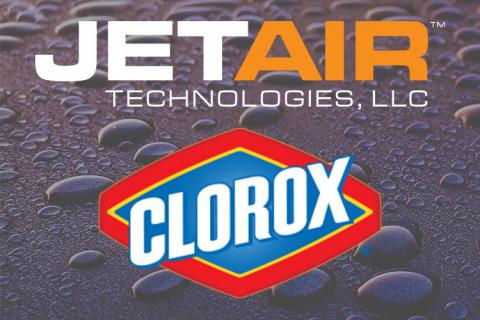How a Single Pouch Drying System Doubled Throughput at Wornick Foods
- JetAir Technologies

- Jan 14, 2019
- 2 min read
Updated: Apr 3, 2019

In a landscape once dominated by metal cans and glass bottles, flexible and retort pouch packaging has exploded into a $25.5 billion dollar industry in the United States (Flexible Packaging Association, 2011). While offering cost-savings and brand differentiation opportunities, flexible and retort pouches also pose end process challenges - especially end process pouch drying.
"In pouch drying, the challenge is drying the hard-to-reach places unique to flexible packaging - the gussets and the flexible pouch undersides which collect steam condensation and are out-of-reach for traditional drying systems,"
explains Scott Lynn, JetAir Technologies' Eastern Regional Sales Manager.
For years, Wornick Foods - like the rest of the flexible packaging industry - had accepted the inherent aesthetic and structural issues resulting from residual steam condensation. However, in planning a line extension, Wornick - a leading developer and supplier of convenience foods and military rations in flexible packaging - looked to eliminate this residual condensation and significantly increase production speeds. Having had success with previous JetAir drying tunnels, Wornick Foods contacted JetAir Technologies.
Based off extensive lab testing and customer feedback, JetAir's engineering team designed a custom pouch drying solution to accommodate the unique product geometry, high production rates, and handling requirements. Each configured system included 20HP JET-3 High-Speed Centrifugal Blowers, JetBlast nozzles, Variable Frequency Drives, conveyors, and guiding packaged into a stand-alone tunnel.
Having extensive experience drying can tops, bottoms, and sides while traveling in mass-flow, JetAir's engineering team designed custom conveyors with belts enabling the simultaneous drying of the pouches' tops, bottoms, and sides at speed for a six foot length. Specially designed guiding provided the product handling and hold-down necessary to keep the product oriented for effective pouch drying and throughput.
With the product secured, the JetAir engineering team developed a pouch handling system which fit into the conveyor frame and opened the product gussets. The design allowed the pouch drying system simultaneous access to all the hard-to-reach areas. JetBlast nozzles were incorporated into the design, offering higher efficiency in drying irregular product surfaces than the typical use of a slotted-gap air knife. The entire system was encompassed in a stand-alone stainless steel tunnel configured to trap the spray from the residual moisture removal and reduce line noise.
The speed, efficiency, and performance of the JetAir pouch drying system exceeded Wornick's expectations. Testing of the final design validated an increase from their original processing rate of 100 pouches per minute to over 200 pouches per minute, more than doubling previous throughput.
Additionally, JetAir's custom designed product handling and blower system offered significant improvements in Wornick's end product results. The combination of JetAir's flexible packaging handling and drying system effectively eliminated all residual steam condensation, including hard-to-reach areas like product undersides and gussets. As a result, related structural and aesthetic damage was eliminated, and Wornick Foods' end product acceptance greatly improved. Elated with JetAir Technologies' pouch drying system's speed, performance, and efficiency, Wornick Foods ordered three more systems to implement in their production designs.




Comments